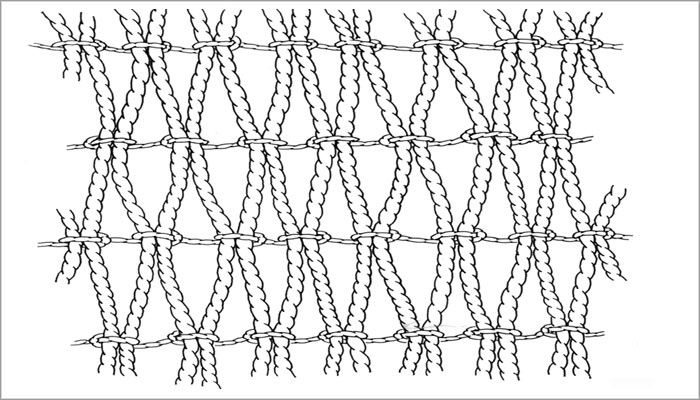Chimu, Labyrinths of a sacred costume
The transparency
The ground of these garments is prepared in a plain weave, part of which was made with the aim of achieving a transparent effect. This property, evidently, was a central part of Chimú ideology. The sense of transparency must have allowed observers to detect what was behind the textile, whether it was the skin of the wearer or another garment that might have been used beneath the costume.
The solid adobe walls of the Chimú ceremonial centers were often built using a similar technique: sometimes the blocks were constructed in such a way that a viewer could see through the wall. Coincidently the ground of the costume was made with a reticular weave with a triangular base which is the same pattern as used in the architectural design of the adobe walls.
The reticular and transparent ground of the costume also seems to refer to another idea important to the Chimú: fishnets. In the ideology of the Chimú, the nets represent the capacity of the Peruvian sea to be an abundant provider of food. Seafood was needed to supplement the Chimú’s agricultural production. In the midst of such an arid desert, the designs associated with fishnets were a symbolic attempt to transfer the fertility of the sea to the fields where crops were grown, a ‘marine harvest’ to a terrestrial harvest.








































